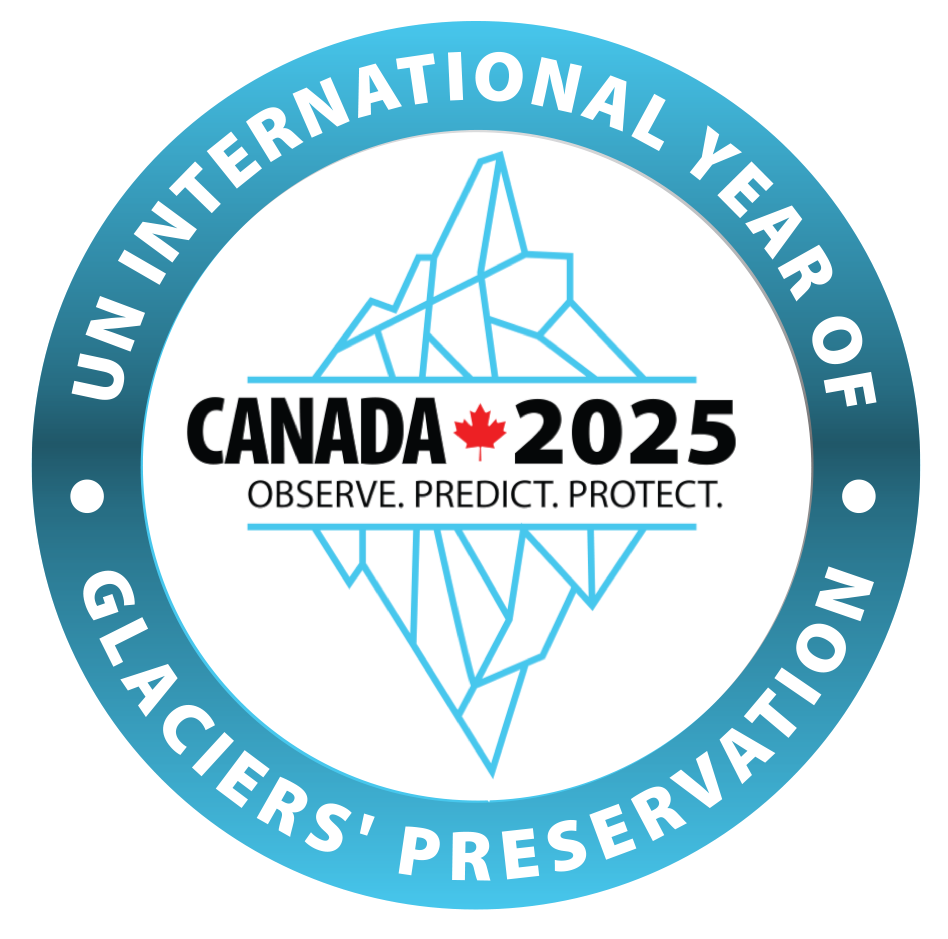
2025 is the Year.
Background
The United Nations has declared 2025 as the International Year of Glaciers’ Preservation to raise awareness of the critical role of glaciers, snow and ice play in local and global climate systems, and to recognize the social and economic impacts their changes will bring. The core objectives of the IYGP are to better equip decision-makers globally with the tools and information needed to address the consequences of deglaciation and otherwise changing snow and ice conditions, and to ensure scientists and researchers have the capacity to provide that information. Achieving these goals requires global cooperation especially at the research level, something Canada is proud to contribute to.
Photo from the Centre for Hydrology, University of Saskatchewan.
The UN IYGP Mission
In 2022, the resolution for the International Year of Glaciers’ Preservation was adopted by the United Nations general assembly. Resolutions are simply formal expressions of the opinion or will of United Nations members, and therefore the IYGP represents the desire of the international community to recognize the importance of glaciers to us all. In order to do this, the 2022 resolution established the following:
That 2025 be declared as the International Year of Glaciers’ Preservation;
That March 21st be declared World Day for Glaciers;
That the United Nations Educational, Scientific and Cultural Organization (UNESCO) and the World Meteorological Organization (WMO) oversee the Year;
That UN Member States, UN organizations, civil-society organizations and other groups participate in the Year;
That an international conference dedicated to glaciers will be hosted by Tajikistan (the Member State who put the resolution forward) in 2025.
Following the resolution, Member States have come together to put develop a broad, international framework for the IYGP. Collectively, the objectives of the IYGP are to:
Raise Awareness: Increase public and stakeholder awareness at all levels about the importance of glaciers in the climate system, hydrological cycle and global water resources, the differential impacts of glacier changes on downstream communities and ecosystems, and the urgent action needed to develop adaptation strategies.
Promote Action: Facilitate the implementation of sustainable measures and best practices for the preservation of glaciers, encouraging transboundary cooperation, knowledge-sharing, and innovative approaches.
Enhance Scientific Understanding: Support scientific research and monitoring initiatives to improve the understanding of glacier changes, the impacts of climate change, possible loss and damages and the implications for communities, ecosystems and water resources.
Strengthen Policy Frameworks: Advocate for robust policy frameworks at national, regional, and international levels to address the preservation of glaciers, incorporating climate change adaptation, sustainable water management, and disaster risk reduction strategies.
Strengthen Financial Support: Ensure financial resources are made available to support glacier monitoring and management of the impact of climate change on glacier melt and downstream impacts.
In Canada, the IYGP is about much more than glaciers; it is about our changing frozen landscapes and how they impact our water, our culture and our lives. It is first and foremost about recognizing that they matter, and then about understanding why.
Quick Facts
Canada is the most glacierized country in the world, with (currently) over 200,000 square kilometres of glacial ice.
Wildfires, floods, droughts and other natural hazards are intimately linked to mountain hydrology.
Since 1985, an estimated 1141 glaciers have disappeared as of 2020 in BC and Alberta (an 8% decline). Ice-area loss has accelerated significantly since 2011.
Glaciers across Canada’s western mountain ranges are projected to lose between 74% and 96% of their 2006 volumes by 2100.
Between 2000 and 2019, Canada’s glaciers lost enough ice to raise global sea levels by 5 mm. That’s about 2.2 million cubic kilometres of melted ice for a total mass loss of around 1,900 gigatonnes.
2024 was the hottest year on record.
Angel Glacier, Jasper National Park. Photo from Our Vanishing Glaciers by Bob Sandford.
FAQs
-
Glaciers are uniquely powerful in telling the story of climate change. For a long time, glaciers have been considered integral features of mountain landscapes, they themselves are remnants of history. Their disappearance is a stark reminder of the impact we humans are having on natural landscapes, a harbinger of the environmental degradation still to come.
-
The IYGP resolution calls on all the UN Member States (of which there are 193), along with UNESCO, the World Meteorological Organization, and other relevant UN agencies to facilitate the implementation of the Glacier Year and celebration of World Day for Glaciers. How the Year is implemented will vary from country to country, but in Canada, we are working with a wide range of organizations. Our partner list can be found at the bottom of our home page.
-
Thanks for your interest, we need your help! Our events page features details about upcoming in-person and online events for you to check out, and you can join our mailing list by sending us an email. Whether you would like to be featured on our site, partner for an event or just be up-to-date with the latest glacier news, we would love to hear from you.


